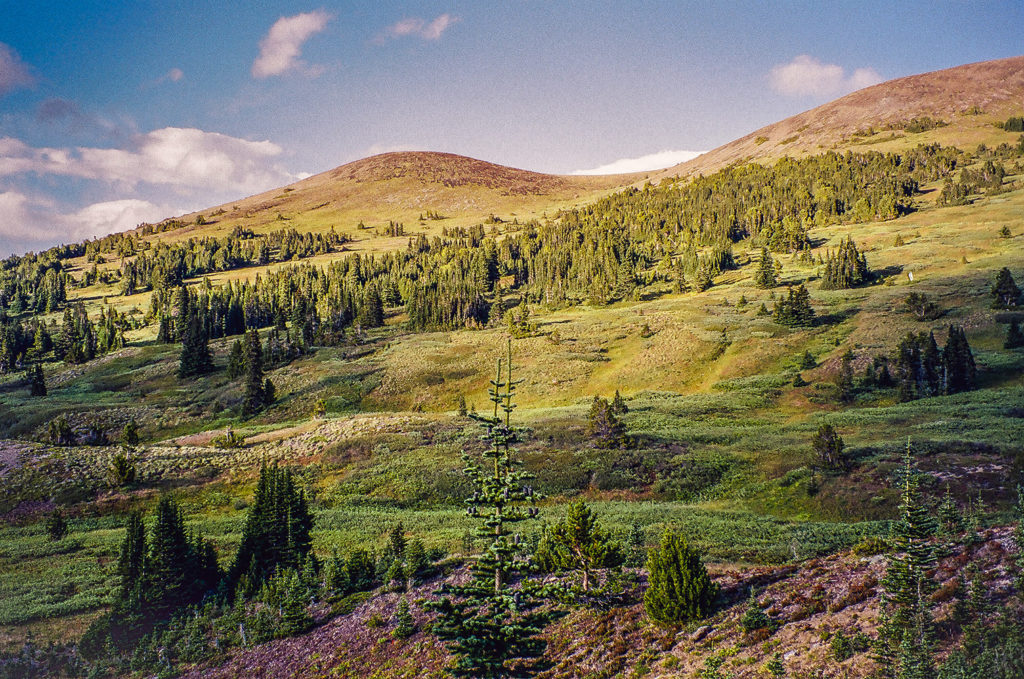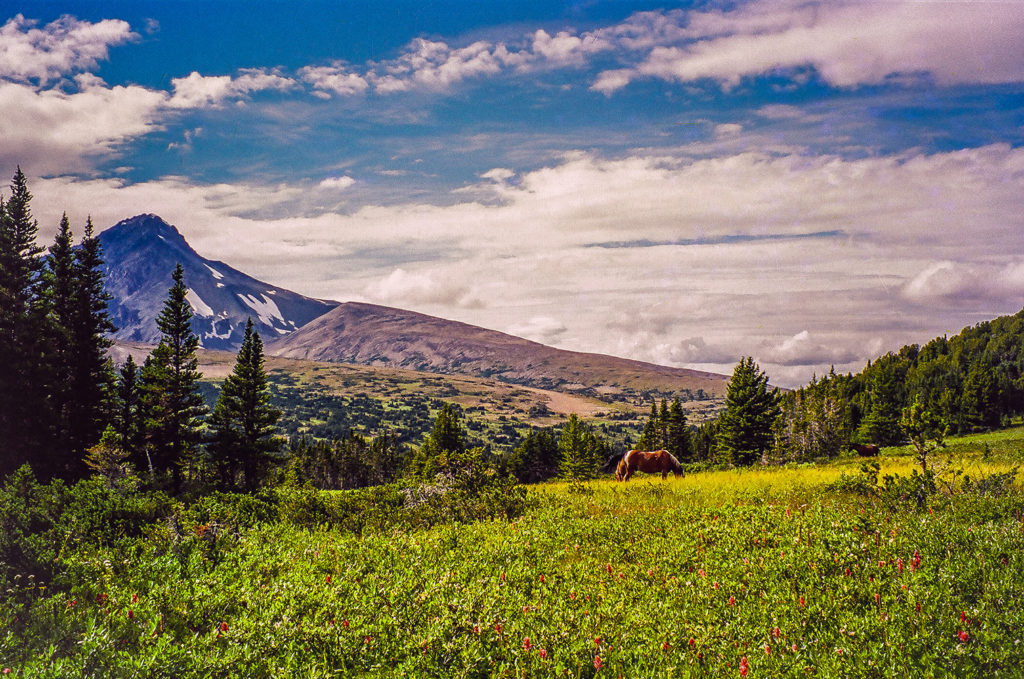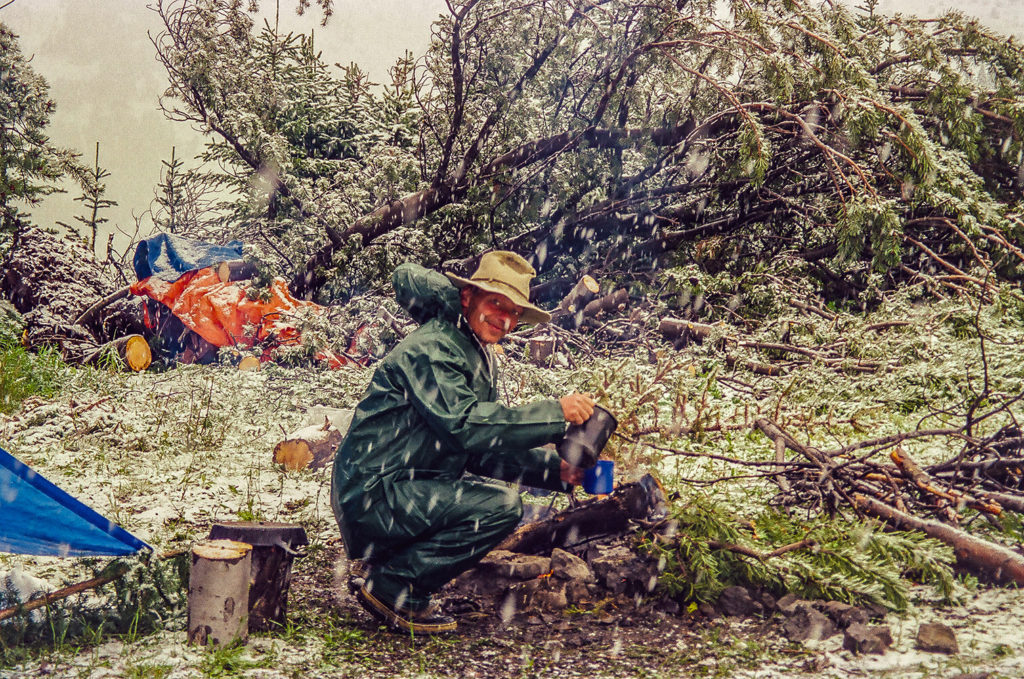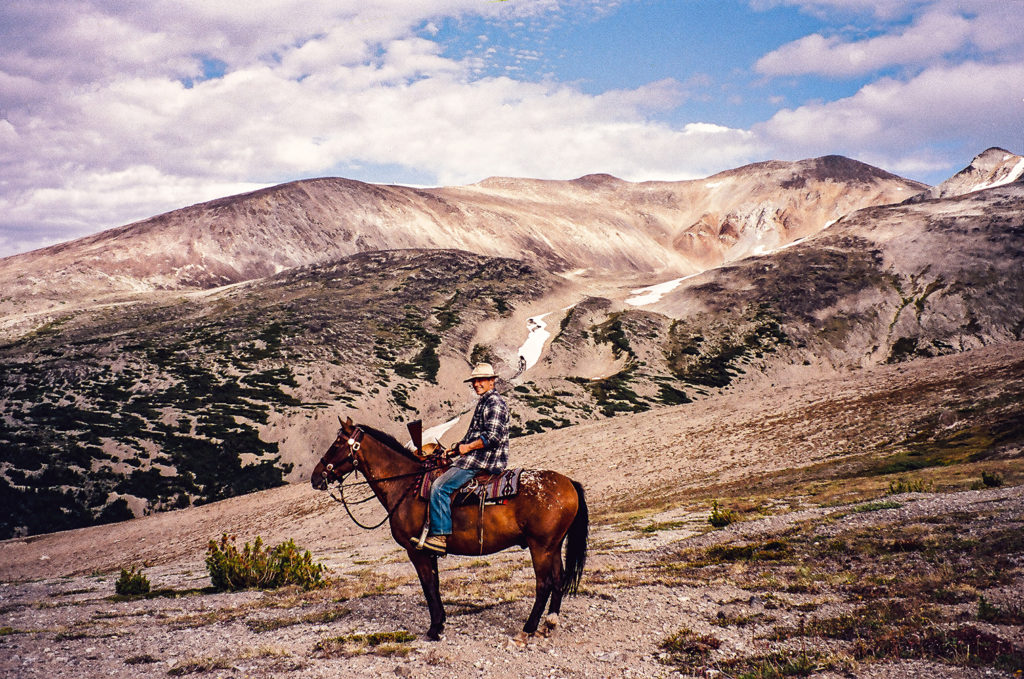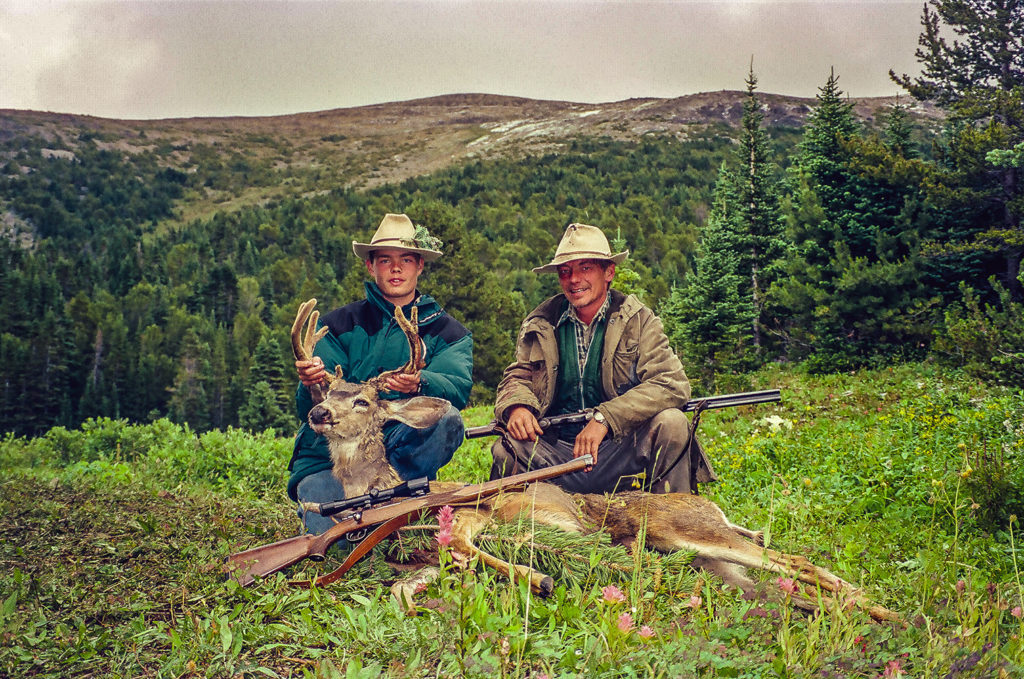The view was breathtakingly beautiful as the stunted trees finally gave way to meadows and rocks, but what I remember even more vividly from my first moments in the alpine was the smell. It was some glorious mixture of spruce and pine with various mountain flowers, I wish I could have bottled it up to bring home to Mom. To this day I can still close my eyes, inhale and bring myself right back to that moment almost twenty years ago. It is just one of the many reasons I keep coming back. Earlier in the year, my Dad bought four old horses from the local outfitter and my brother Carl and I were beyond excited to learn as much as we could in the month leading up to our first hunt with them; mule deer and mountain goat in the spectacular Chilcotin region of British Columbia.

The earliest settlers first came to the Chilcotin in the mid 1800’s looking for quicker access to the gold fields of interior British Columbia. A route was planned from Bute Inlet on the coast, up the Homathko River to the plateau and onwards to Barkerville. It sparked what is known as the Chilcotin War in 1864 and was abandoned in favor of the longer, but less hostile Cariboo Wagon Road. Since that time, the area has remained sparsely populated and has been used mainly for cattle ranches and resource extraction.
The sprawling Chilcotin Plateau stretches from the mighty Fraser River in the east to the Chilcotin Range – a sub-range of the massive Coastal Mountains – in the west. There is a variety of terrain that makes up the Chilcotin, but it is predominantly comprised of vast coniferous forests and swamps that are interspersed with sparkling lakes and glacier-fed rivers. Small, isolated pockets of sheep can be found throughout, but far more numerous are mule deer, mountain goat, moose and all the big predators including many of the largest cougars ever taken in recorded history.
After trailering the horses from our cabin to the base of the mountain we were finally ready to head up into the alpine. We’d decided to go in a couple of days before the season opened on September 1st to scout and afford us an extended trip before the impending school year began. Those poor old geldings sure got a workout on that ride as they were used to the easy life they had led all summer. Not only was it a steep ride, but it was so hot out that the only things moving besides us were the horseflies. Carl and I were naturally competing over who could kill more horseflies, I don’t remember who won, but I do recall the final tally being over one hundred much to our horse’s delight. We made it up to our anticipated campsite in the alpine about four hours later. The horses were quickly taken care of and staked out to feed and we got to work setting up camp at the edge of a small alpine meadow. We had a beautiful little lake within two hundred yards of the tent and sufficient cover from the elements was provided by a stand of gnarly old pine trees.
Much to my surprise we awoke the following morning to a couple inches of snow which was reluctantly turning to rain. We were now completely socked in, barely able to see 50 yards. I remember being shocked by this development, but Dad seemed unfazed while he lazily watched the coffee bubbling away in the percolator over the soggy campfire. Thankfully, the weather changed for the better by the end of the morning and we were back to sunshine and 20 Celsius by mid-afternoon. Oh, how I love mountain weather! We glassed the bowl that evening spotting a few deer making their way to feed and saw one goat crest the top of the mountain opposite from camp. Excitement was in the air that night. The following day, hunting season officially began.
We saddled up the next morning and rode further up the mountain, nearly reaching the peak before having to tie up the horses. We made the final ascent to the crest on foot. From checking the topographic maps before leaving, we knew it would be steep, but nothing prepared me for that first view as I belly-crawled to the edge. It was a sheer drop-off, some 1000 feet. There was no way we were ever getting in there, but the goats seemed to love it. We spotted a group of nannies and kids immediately who seemed to have zero issues with life on the mountain cliffs. After enjoying the moment, we backed off and worked our way to the horses. We continued to work our way around the mountain as the day progressed before eventually heading back towards camp.
As we made our way back to the basin where we’d set up camp, I spotted something reddish-brown in one of the small meadows far below us. A quick review through the spotting scope confirmed it was indeed a mule deer buck. We were too far away to count points so we planned to get closer so we could ensure he had the required headgear to be legal (four points on one side, not including the brow tine). He was by no means a giant buck, but he passed the test and we set off to get within shooting range. All the elements were perfect for a stalk from above and we managed to get set up somewhere around 100 yards away by our estimation completely undetected.
The stalk had been the easy part, now I needed to try and get a hold of my nerves as buck fever was setting in hard. He was oblivious to us as we waited patiently for him to get out of bed. After what felt like hours he finally started to rise for a late afternoon stretch and presented a perfect broadside shot for me. At the age of sixteen, I was nowhere near mastering my nerves as my first shot hit the dirt harmlessly behind him. As luck would have it, the buck did a one-eighty and presented an equally perfect target for me. I fired again, only to miss completely once more. By now he knew something wasn’t quite right in the world and was glancing around in different directions. Meanwhile, Dad was hissing at me to shoot again. Between the sounds of chambering another round and the angry whispers the buck now had us pegged and was staring straight at me. I settled the sight on the center of his chest and squeezed once more. He was hit hard and went no more than two steps before collapsing to the ground. Third time’s a charm! An uncontrollable wave of shaking overtook my arms and legs as Dad smothered me in a bear hug. We sat there for five minutes or so and soaked up the moment before heading towards the deer together. As a parent now myself, I have a whole new appreciation for the father/son moment that had just taken place.
We checked out the buck together briefly before heading back to get the horses and the rest of the troops. Being so very experienced at this point (note sarcasm) we decided to pack out the deer whole on my horse Lucky. Why we did things this way I’ll never know and can only laugh now at what inevitably followed. We managed to get the deer on and tied down, but made it no more than 20 yards before Lucky’s eyes bulged out of his head and he took off downhill for the nearest patch of timber he could find. I think he could have had an illustrious career as a saddle bronc horse from what I saw as he tore away from us. Both he and the deer got tangled up something fierce in the deadfall and it took the better part of an hour to get everyone back out again. Thankfully he was not injured at all, although he managed to break one of the tines off the buck which we never recovered.
That first foray into the mountains of the Chilcotin instilled my true connection with nature and my passion for hunting. I have been back to these mountains countless times since and will continue to do so until I can no longer strap on the boots or shoulder a pack.
If you’re considering a hunt in BC, and have been swept up by the allure of the High North, don’t overlook the Chilcotin. It is a wild and remote region, that does not disappoint.


